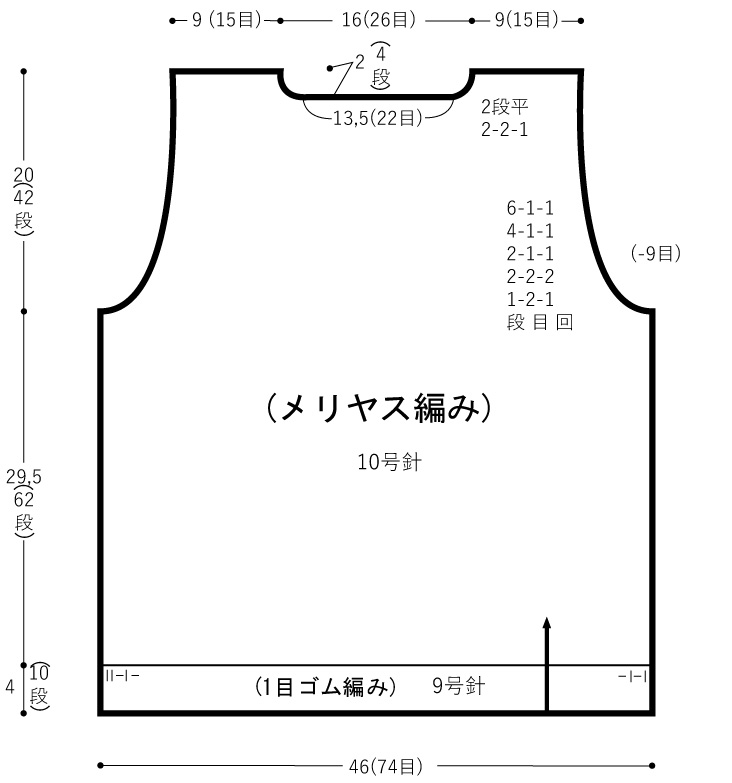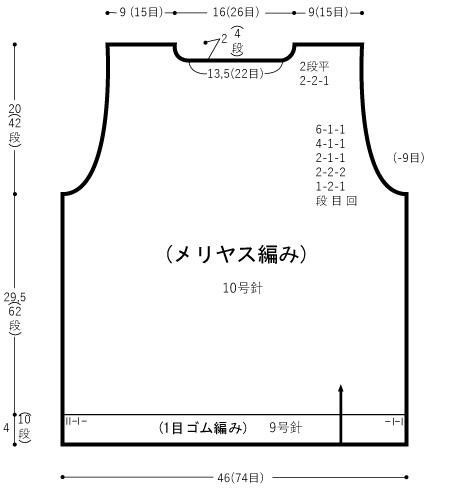Understanding Japanese Knitting Patterns I - Basics
Understanding Japanese Knitting Patterns
Recently ITO added the Japanese knitting magazine Keitodama to its product range as well as a small yet fine selection of Japanese knitting and crocheting books. The magazine and the books are available through our retail partners.
Japanese knitting patterns are easy to understand without any knowledge of the Japanese language, because they are represented graphically. Once the basic elements and principles are understood, it is no problem to follow any Japanese knitting or crocheting pattern. This is due to the fact that the representation of knitting patterns is standardized in the Japanese Industrial Standard (Nippon Kogyo Kikaku). More over special techniques are usually illustrated or photographed step by step.
Part I – Basics
General Information
All specifications in the patterns are given in cm, stitches and rows.
These are the three most important Japanese signs (Kanji) to know:
号 – gou represents number and indicates the needle size
目 – me represents stitch. 18 目, are 18 stitches.
段 – dan represents row. 22 段, are 22 rows.
Needle sizes
The needle size is located at the top of a pattern. Knitting needles (棒針 - boubari) are specified in Japanese sizes from 1 号 bis 15 号, bigger sizes are described in mm.
Japanese Knitting Needle Sizes:
| Japanese Size | No.0 | No.1 | No.2 | No.3 | No.4 | No.5 | No.6 | No.7 | No.8 | No.9 | No.10 | No.11 | No.12 | No.13 | No.14 | No.15 |
| mm | 2,1 | 2,4 | 2,7 | 3,0 | 3,3 | 3,6 | 3,9 | 4,2 | 4,5 | 4,8 | 5,1 | 5,4 | 5,7 | 6,0 | 6,3 | 6,6 |
Crochet hooks (かぎ針 – kagibari) are specified from 2/0 号 through 10/0 号. If you see a „x/0“, it will be a crochet hook.
Japenese Crochet Hook Sizes:
| Japanese Size | 2/0 | 3/0 | 4/0 | 5/0 | 6/0 | 7/0 | 8/0 | 9/0 | 10/0 |
| mm | 2,0 | 2,25 | 2,5 | 3,0 | 3,5 | 4,0 | 5,0 | 5,5 | 6 |
ITO knitting and crocheting needles in Japanese sizes will be available starting autumn of 2016!
Gauge
Just below the needle size the gauge for the pattern is given per 10 cm (4 inches).
For example: 18 目∙22 段 (18 stitches x 22 rows).
Once you have identified the needle size and the gauge, you can choose a yarn. The ITO retail partners will gladly advise and help with choosing a yarn to get the gauge. It is necessary to knit a gauge swatch and to wash it. Your gauge has to match the gauge of the pattern. If you get a differnt gauge, try a smaller or bigger needle size.
Reading and Understanding a Graphic Knitting Pattern
The knitting pattern itself is represented graphically. Our example shows a pattern for the back part of a shirt knit in stockinette stitch with a 1 x 1 ribbing border.

Below thhe graph you find the information 46(74目), indicating: The back is 46 cm wide and 74 stitches are casted-on.
The arrow shows the direction for knitting, in this case the knitting direction is bottom up.
Inside the waistband the information 1目ゴム編み and 9 号針 reads: 1 x 1 ribbing with Japanese needle No.9 (4,8 mm).
Ribbing patterns are written in Japanese like this:
1目ゴム編み 1 x 1 ribbing
2目ゴム編み 2 x 2 ribbing
The ribbing is also partially charted on the left II-I- and on the right -I-I. The I represents a knit stitch and the - represents a purl stitch, meaning that on the right side of the fabric you start with k1, p1, k1, p1 and you end the row with p1, k1, p1, k2. Charts always show the right side of the fabric. The ribbing is worked over 4 cm (10 rows), this information is given on the left side of the graph: 4(10 段).
Further the patterns reads: change to needle No. 10 (5,1 mm) and continue in stockinette stitch. This is indicated in the middle of the illustration: 10 号針 und (メリヤス編み). As the pattern refers to a photograph of the knitted model (which is not shown here), it is not necessary to know the descriptions for stockinette stitch or garter stitch by heart as you can usually see the pattern on the photograph. For completeness these are the Japanese writings:
メリヤス編み stockinette stitch
ガーター編み garter stitch
Other stitch patterns are usually charted.
On the left side of the chart it is indicated to work for 29,5 cm corresponding to 62 rows before starting the armhole shaping: 29,5(62 段). The armhole shaping itself is only written on the right side as the left side is worked the same way. At first sight the numbers for the shaping may look irritating, yet they follow a simple rule.
On the right of the armhole we see a (-9目) meaning to decrease 9 stiches in total. Below the decrease instruction we see again three Kanji signs: 段目回. The first two signs we know 段 for row and 目 for stitch, the third sign 回 means times and indicates how often the decrease is repeated. The first decrease is 1-2-1: every row decrease two stitches one time. 2-2-2: every second decrease two stitches two times. 2-1-1: every second row decrease one stitich one time. 4-1-1: every forth row decrease one stitch one time. 6-1-1: every 6th row decrease 1 stitch one time. 9 stitches in total are decreased.
For the neckline first the center 22 stitches are bound-off over 13,5 cm. Then the neckline is shaped by decreasing 2-2-1, meaning on the second row two stitches sts are decreased once. 2 段平 tells us to knit straight for 2 rows. As the shaping is done on both sides the neckline is worked over 16 cm (26 stitches) total and 15 shoulder stitches remain each side. These specification are given above the graph.
Here are the last two Kanji we learned:
回 – kai represents times or repeat
平 – taira represents straight
The pattern in written form reads like this:
With No.9 (4,8 mm) needle CO 74 sts and work in ribbing for 4 cm (=10 rows).
RS: *k1, p1, repeat from * until last two sts, k 2.
WS: p 2, *k1, p1, repeat from *.
Change to No.10 (5,1 mm) needle and work in stockinette st for 29,5 cm (=62 rows). Shape armhole: BO 2 sts at the beginning of the next two rows, then BO two stitches each side every 2nd row 2 times. Then dec 1 st each side every 2nd row 1 time, then dec 1 st each side every 4th row 1 time and then dec 1 st each side every 6th row 1 time. Work until armhole measures 18 cm (= 38 rows). BO center 22 sts and work sides separately. Shape neckline: BO 2 sts every 2nd row 1 time. Work 2 more rows. BO rem 15 sts (or put on hold).

